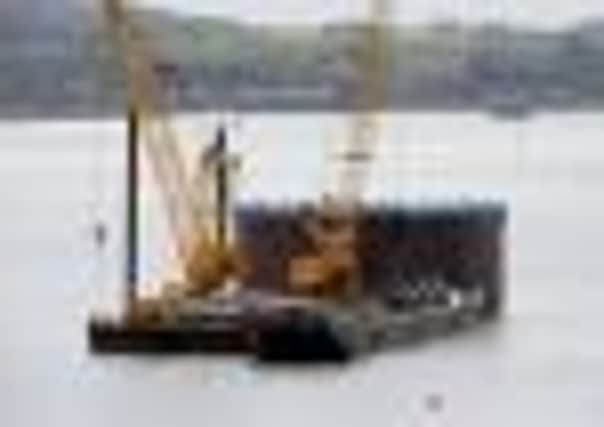800 on site as Forth Replacement Crossing starts to take shape


The milestone came as project chiefs revealed yesterday its workforce had doubled in the last three months to more than 800, and would peak at 1,200 by the end of the year.
The development also marks the start of the most critical part of the scheme – building underwater bases for the three, 700ft towers of the bridge.
Advertisement
Hide AdAdvertisement
Hide AdOne of steel cylinders – known as caissons – is anchored at the site of the bridge’s north tower, off the Fife coast, after arriving from Poland last month.
Another, as tall as an eight-storey block of flats, will be manoeuvred into position next week before being sunk into the Forth for the south tower.
They will act as “moulds” for concrete foundations for the towers, with a similar process being used for the central tower, to be built on Beamer Rock.
David Climie, project director for the Scottish Government’s Transport Scotland agency, which is in charge of the project, said the main £790m contract was going precisely to plan.
He said: “We are still exactly where we want to be, on time and budget. Things are progressing well.”
However, the continuing sensitivity of the project, following rows over its use of foreign steel, was laid bare in a safety briefing given to staff and site visitors.
It stated: “Avoid engaging in discussions about the contract. You may not know all the facts. Refer inquiries to the project helpline.” Safety team official Alex McGowan compared it to the Second World War slogan, “Careless Talk Costs Lives”.
Mr Climie said separate contracts to upgrade an M9 junction which will provide the main access to the bridge to and from the west, and for electronic traffic control signs on the approach from Fife, were also “going well”.
Advertisement
Hide AdAdvertisement
Hide AdThe five-year project is due to be completed by the end of 2016, which includes a year’s contingency in case of bad weather.
It was ordered by ministers after concerns were raised about the long-term strength of the Forth Road Bridge due to corrosion of its main cable.
Carlo Germani, project director for the Forth Crossing Bridge Constructors consortium, which won the main contract, said: “We are into real construction on the bridge itself, on the caissons. This is probably the most critical part of the operations – the foundations.”
The caisson for the south tower is currently moored upstream, off the Lothian coast.
The bridge’s concrete towers will be built on the completed foundations, with that stage of the work starting early next year and lasting until late 2014. It will be followed by 18 months of bridge deck construction.
During that stage of the project, the bridge will temporarily have the world’s longest balanced cantilever on a cable-stayed bridge, when two 1,080ft-long deck spans are attached to either side of the central tower.